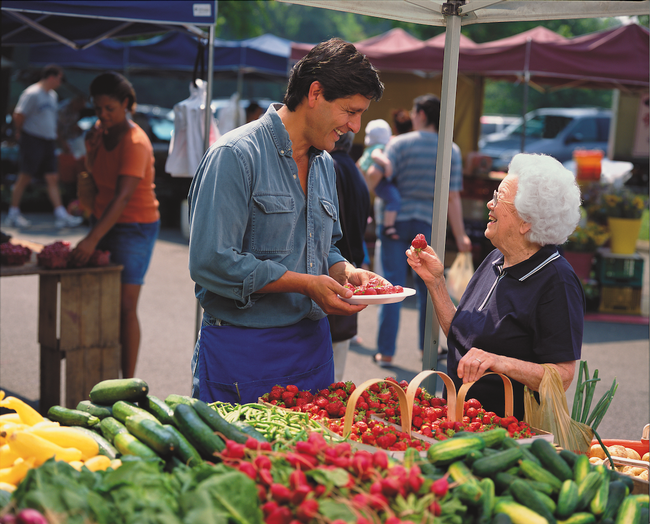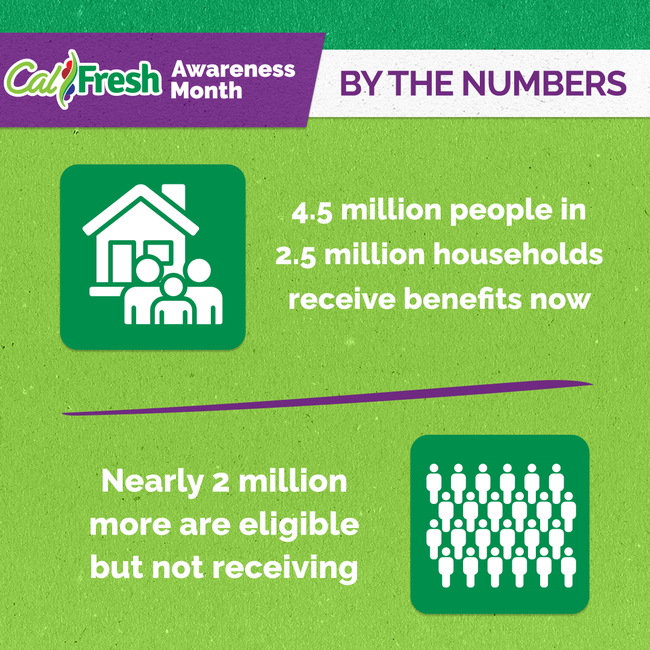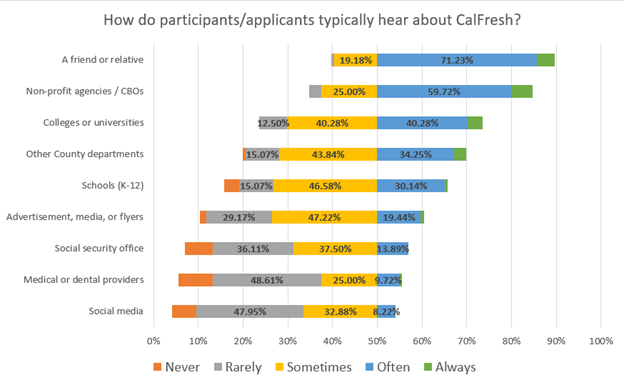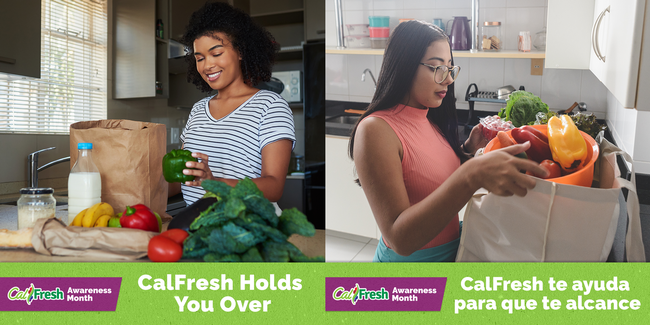Participation in CalFresh by eligible elderly Californians is estimated at 19%
CalFresh Food, known nationally as the Supplemental Nutrition Assistance Program (SNAP) and historically as the Food Stamp Program, is California's largest food assistance program and serves as the first line of defense against food insecurity by providing eligible households with an EBT (electronic benefit transfer) card that can be used to buy food at many grocery stores and farm-direct outlets.
However, CalFresh is greatly underutilized. The U.S. Department of Agriculture estimates that only 70% of eligible Californians are actually benefiting from SNAP, compared to 82% nationally. This is one of the lowest rates in the U.S., putting California in 46th place among the 50 states and the District of Columbia. For our working poor and elderly Californians, participation is even lower, estimated at 59% and 19% respectively.
Why does underutilization matter?
SNAP participation has been shown to raise more Americans out of poverty and deep poverty than any other income-based program and is especially important for children. SNAP also improves household food insecurity, a condition that has been correlated with poor diet quality, chronic health conditions, and overall poorer health.
SNAP participation is also associated with reduced health care expenditures. For low-income older adults this includes fewer hospital or nursing home admissions and fewer reports of skipping medications due to income. For participating adults, this includes fewer physician's office visits and a reduced likelihood of psychological distress.
CalFresh underutilization not only impacts food and health, it also results in lost economic activity. Because CalFresh recipients tend to spend their benefits soon after receiving them, it is estimated that for every dollar spent on CalFresh, $1.50 in economic activity is generated. Further, nutrition incentive programs, like Market Match, can have an even greater impact on healthy food access and local economies. Nutrition incentives work by doubling the value of CalFresh benefits, up to a certain amount, at participating farmers markets and other farm-direct outlets. These incentives increase the purchasing power of CalFresh participants, encouraging them to buy locally grown produce while also making fresh fruits and vegetables more affordable to community members on a limited income. The economic multiplier for nutrition incentive programs is even higher than CalFresh and is estimated at $3.00.
Maximizing CalFresh Food enrollment in California is a win-win: eligible residents receive meaningful federal financial support to buy food and local stores and farmers enjoy the direct infusion of federal dollars into their local economy. Low enrollment means that every year tens of millions of dollars in federal hunger relief do not benefit low-income workers, children, and older adults or local businesses and agriculture.
Tell friends and relatives
CalFresh Healthy Living, UCCE programs across the state are working with partners to get the word out during CalFresh Awareness Month to let their communities know about CalFresh Food.
In March 2022, UC Cooperative Extension in San Luis Obispo (SLO) and the SLO CalFresh Alliance surveyed eligibility staff and supervisors with the County Department of Social Services (DSS) about perceived barriers to CalFresh enrollment among potentially eligible clientele. SLO County has one of the lowest participation rates in California as reported by the CDSS Data Dashboard Program Reach Index and the CalFresh Alliance, which includes UCCE, DSS, and many other community partners and is led by the local food bank has been working to improve participation rates locally. Survey respondents (n=86) reported that applicants are most likely to hear about CalFresh through a friend or relative, nonprofit agency, or a college or university (likely through campus-based outreach). More information will be coming out soon from the CalFresh survey to inform the work of the CalFresh Alliance and increase access and participation in CalFresh.
In addition, CalFresh is accepted at many farmers markets and farm stands. To find out which farmers markets accept CalFresh or offer nutrition incentives near you, visit the farmers market finder site. By partnering with market managers and other agencies in San Luis Obispo and Northern Santa Barbara County, UCCE outreach has contributed to a 171% increase in CalFresh and Market Match redemption over the last three years with over $380,000 infused directly into the local economy. That is money spent on healthy local foods by low-income community members.
Who qualifies?
In general, CalFresh is for individuals and families with limited incomes. The best way for someone to find out if they qualify is to apply. Interested community members can visit GetCalFresh.org, call 1-877-847-3663 (FOOD) or they can go to their local department of social services.
The time has never been better to tell someone about the CalFresh Food program. Hearing about CalFresh from a trusted source is one of the most effective ways to encourage hesitant community members to apply.
CalFresh Awareness Month is aimed at increasing knowledge of this vital food and nutrition security program and the help it can provide for not just individuals and families, but our community as a whole. This federally funded program has the unique and transformative impact of affording dignity to those experiencing hunger and investing in our local business communities.
Ensuring that people who qualify for CalFresh are aware of the program and know where to apply supports UC ANR's public values of promoting healthy people and communities by increasing food and nutrition security and promoting economic prosperity in California by increasing local economic activity.
Author - Area Director for UCCE in San Luis Obispo, Santa Barbara, and Ventura Counties



